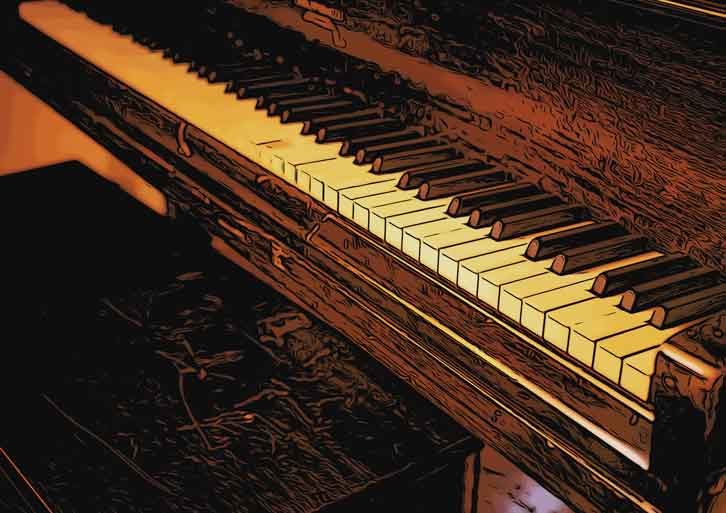Yamaha P45 Review: Overview
Yamaha P45

OUR RATING:
3.8
(out of 5)
Pros
- Fully weighted keyboard with good action for an entry-level digital piano
- Very good piano samples
- Affordable
- Elegant, minimal design
- Lightweight, portable
Cons
- Speaker sound is not great
- You’ll need to consult the manual to use some functions
- Other models offer the same or better features for the same money
Bottom Line:
A very good, affordable, entry-level digital piano. In the same price range, however, competitive models like the Roland FP-10 or the Casio CDP-S160 offer better value for the money.
Check Availability and Price in Your Region:
US and Canada
UK and Europe
Introducing the Yamaha P45
Yamaha is by far the most popular manufacturer of digital pianos. They have been around the longest and they have the widest selection.
By focusing their efforts on making digital pianos with quality keyboard action and touch, they have had massive success, controlling nearly half the market in digital instruments last year.
The Yamaha P45 is the most affordable digital piano the company makes. It offers a full 88-key, weighted hammer-action keybed, built-in speakers, and an elegant, simple design at an affordable price.
But is it worth it? Are there better options out there for the same price or less?
To answer these questions, we got our hands on a P45 and tested it out.
See here for all of our reviews of digital pianos and other audio gear.
Alternatives to the Yamaha P45
The alternatives listed below are classified as digital pianos. They are the simple slab design, all with fully-weighted keyboards. Yamaha also makes cheaper, portable keyboards for beginners like the PSR-E range.
It is also worth mentioning that the P45 goes by different names. In the UK and Europe it has the same specs as the P-145. In the US, there is an Amazon-exclusive version of the P45, known as the P71. It is exactly the same as the P45, just a different name. If you’re interested in this digital piano, it is worth it to check the price of the P71, as it does sometimes vary.
Roland FP-10
Our favorite digital piano in the $500 range. The most realistic piano sound in its class. Realistic action with a high quality keyboard.

Check Price:
Roland FP-30X
A class up from the FP-10 with life-like action, excellent speakers, bluetooth MIDI. Worth the extra money.

Yamaha P125
If you’re looking for a Yamaha in this price range, this is your machine. With a better sound engine, much better speakers and 192-note polyphony, this is definitely worth the upgrade from the P45.

Casio CDP-S160
With better speakers, 18 instrument sounds, and quality action at the same price, this piano has the edge over the Yamaha P45.

Korg B2
An affordable digital piano with excellent speakers and otherwise similar features to the P45.

Kawai ES 120
An excellent digital piano with a beautiful samples and great keybed. Unfortunately, a bit pricey.

Overall Design and Controls
The Yamaha P45 has an elegant, simple design. Offered in charcoal black color only, it has 88 keys and only two buttons (function and power), and volume control.
The built-in speakers are hidden to the eye and the inputs and outputs are tucked under the rear, hiding the cable connections.
It will fit easily on a small table or you will need a dedicated stand.
Overall, I love the minimal design. The only trade-off to the two-button look is that the functions are not labeled on the dash. So for example, if you want to use the transpose function or add reverb, you will need to consult the manual.
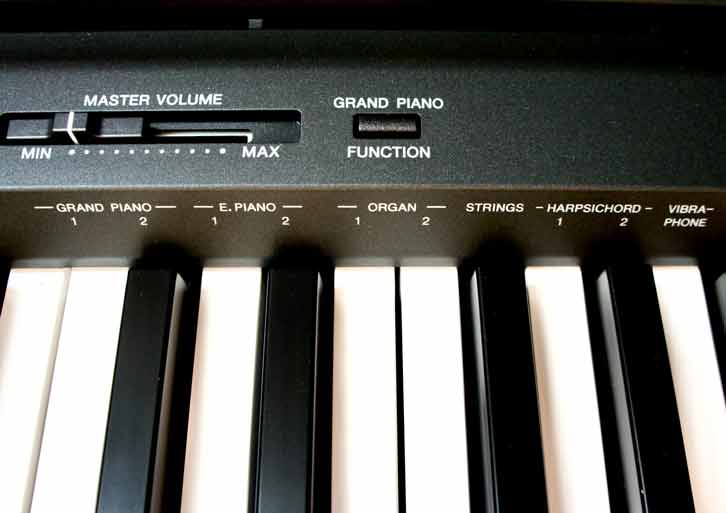
Build
The P45 comes with a music stand that is sturdy and easy to take on and off if you’re moving about with your keyboard.
Measured at 1.32 meters wide (52″), 154mm (6″) high, and 295mm (11.5″) deep, the P45 is quite compact. It weighs 11.5kg (about 25 lbs). On the whole, it is very portable and light for a fully-weighted 88-key piano.
Keyboard
Keyboard action and touch have been Yamaha’s focus in making digital pianos and their entry-level digital piano, the P45, is no exception. The P45 is equipped with 88 fully weighted, hammer-action keys.
The keyboard action is technically Yamaha’s ‘Graded Hammer Standard’ (GHS). Yamaha has three action standards. GHS, suited for beginners, is the most affordable action Yamaha offers..
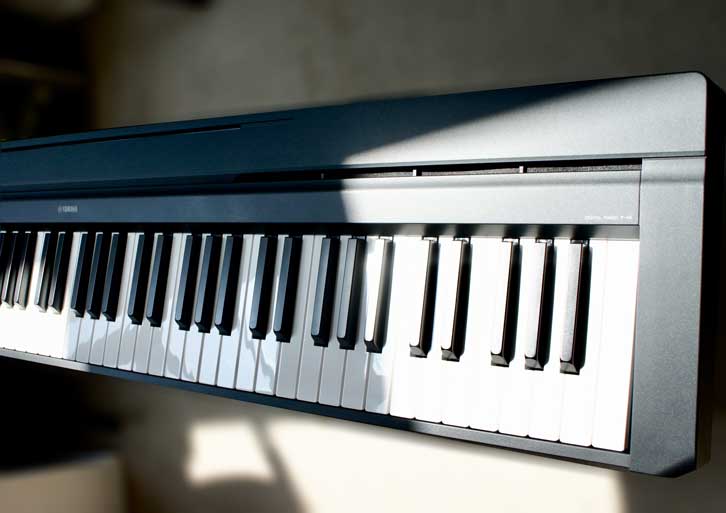
I quite liked the feel and found the keys to be less noisy than most digital pianos. When playing with headphones, for example, the lack of keyboard noise was very pleasant.
The black keys are matte and the white keys are shiny. Although they do not have a moisture-absorbing finish like some digital pianos, I didn’t notice any slipping problems with the shiny keys.
The weight of the keys changes according to register. So like an acoustic piano, the bass feels heavier and the treble feels lighter.
You can adjust the velocity response as well. There are four presets: fixed, soft, medium, and hard. Medium is the default setting.
Hard is the least responsive, meaning you will need to strike the keys hard to get a loud sound. The ‘fixed’ preset will give you the same volume regardless of how hard you strike the keys.
Sound
The piano sounds on the P45 are produced by Yamaha’s Advanced Wave Memory (AWM) tone generator. This is a system developed by Yamaha for effectively using sampled waveforms in synthesizers. On the P45, AWM has been applied to stereo-recorded samples of actual pianos.
The result is a satisfying, realistic piano sound. The default sound (Piano 1) is a rich grand with realistic sustain.
The P45 has 64-note polyphony, double that of its predecessor, the P35. This means the P45 can produce 64 notes simultaneously. This stat is on par with most of the competitive digital pianos in this range.
Polyphony becomes important when playing the complex textures of classical music or when layering more than one sound at the same time. The higher the number, the less limited the instrument is to produce rich, lush, realistic sounds.
Speakers
The P45 is equipped with two 12 cm speakers. These are sufficient for practicing only.
Unfortunately, I found the speakers to be lacking. They are not good enough to reflect the quality of the piano samples the P45 can produce. The speaker’s sound is mostly clear and sufficient for practicing, but not all that inspiring.
When using headphones, the poor quality of the speaker sound becomes obvious. With headphones, you can hear the subtlety of the samples, and the whole experience is more satisfying.
I also had one more quibble. I wish the P45 had TRS outputs for external speakers. One can use the headphone jack as a line out but then you need a Y-shaped adapter cable, which no one has lying around.
Features
Each of the following features must be activated by pressing the function key followed by some keyboard note. All of this information is clear in the manual, but it does mean that you will need to consult the manual more often than you probably would like.
Modes
Dual Mode
Dual mode allows you to layer two instrument sounds at the same time across the range of the keyboard.
For example, you can combine two different piano sounds and create some interesting combinations. The volume mix of the two sounds can also be adjusted.
You might find some interesting sounds, but honestly, I doubt that you’ll find this mode very useful.
Duet Mode
Dual mode splits the keyboard at E5 and allows two people to play the instrument in the same pitch range regardless of where they are on the keyboard.
This is great for students and teachers who are playing through a piece together. It means you’re not limited as the teacher to always playing only the bass or only the treble as you follow along with your student.
Reverb
The p45 features four reverb effects: Room, Hall 1(small concert hall), Hall 2 (large concert hall), and Stage. You can also further tweak each of these settings, by increasing the intensity of the effect on a scale of 1-10.
This is a quality reverb effect, but it is limited by the speakers. With external speakers or headphones, you can appreciate it a bit more.
Transpose and Fine Tuning
For those who aren’t so keen on learning how to transpose, the P45 offers transposing ability with the push of a button. You can shift the pitch up or down at will.
The P45 also has the ability to fine-tune the instrument to match other instruments’ tuning or that of a recording. In .2 Hz increments, the pitch can be altered anywhere in the range A=414 – 466.8 Hz.
Metronome
Finally, the p45 is equipped with an essential metronome function. This works as it should.
Inputs and Outputs
The Yamaha P45 is equipped with the following inputs and outputs:
- USB (type B) in/out
- AC power
- 1/4” Sustain
- 1/4” Headphone Out
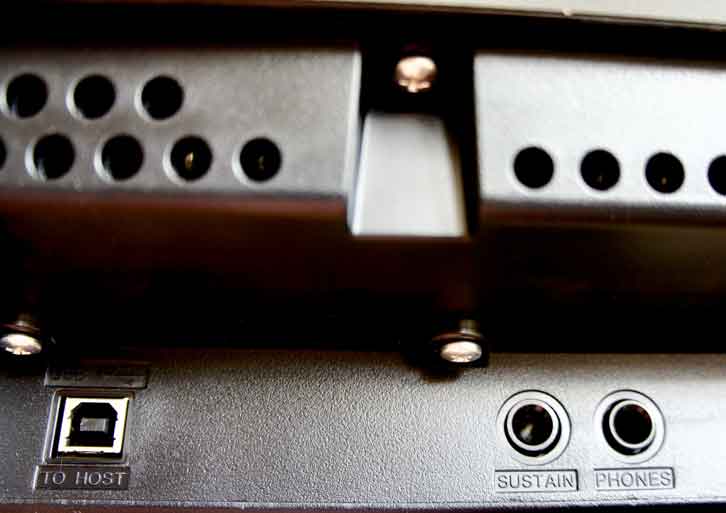
In lieu of MIDI in/out, the USB connection is much preferred and nice to have on a beginner machine. This allows you a direct connection to your computer without an audio interface.
You’ll find this handy for connection with GarageBand or professional DAWs. And, if you’re using any online piano learning software this is an essential connection.
Accessories
The provided sustain pedal is basic at best. Nice that they supply one, but it is definitely not going to cut the mustard in the long run. It does not support half-pedaling. Built from cheap plastic, it does not have enough weight to stay in position on the floor.
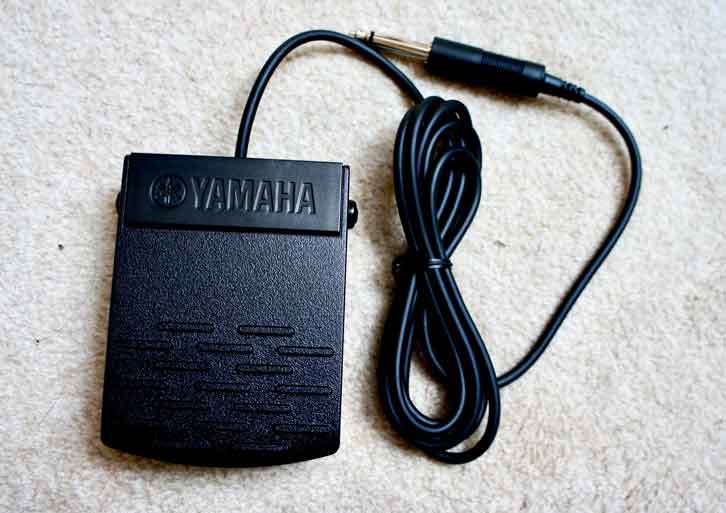
An affordable, quality pedal like the M-Audio SP-2, is recommended.
Verdict
The P45 is a very good digital piano that won’t disappoint most, especially at this price. Unfortunately for Yamaha, the competition have outdone them in this price range.
The Roland FP-10 and the Casio CDP-S160 offer more features, and keyboards with similar to higher quality action. And for a little more money, the Yamaha P125 or the Roland FP-30X give you very realistic piano sound engines and higher quality hardware all around.
Check Availability and Price of the Yamaha P45 in Your Region:
US and Canada
UK and Europe
Questions or Comments?
Follow the discussion here on Facebook.
